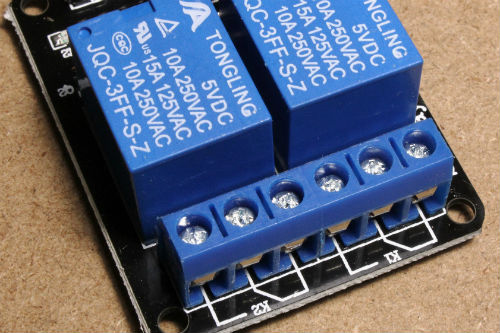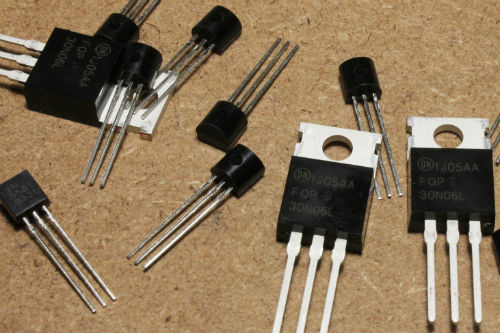To do any job well, you need the tools to complete it. But in life, that correct tool or component isn’t always obvious. For example, if you need to drive a nail, a hammer works quite well. But to cut a piece of wood, you could use a table saw, miter saw, jigsaw, pull saw, router, knife, laser cutter, or any number of other devices. They all cut wood, but some may work much better than others for specific tasks.
The engineering world knows this struggle well, and transistors and relays are a perfect example. Nominally, both devices do the same job—they switch the flow of current on and off—but they use very different methods. Depending on your experience and industry, you may default to one or the other, but each device has its own advantages and disadvantages. To evaluate which will work best for your application, it’s important to understand the details of each device’s characteristics.
Reliable Relays

Relays are a time-tested technology, and they physically switch contacts as if you were throwing a switch yourself. Typically, they use an electromagnet reed switch to allow a small electric signal to switch much higher voltages.
Relays are distinct from transistors in a few key ways. Here are five of their biggest differences:
- • Relays handle much higher current and voltage loads.
- • Relays can switch loads regardless of the device’s internal circuitry.
- • Relays can handle alternating current (AC) or direct current (DC) loads.
- • Relays don’t leak current. A relay is entirely on or off.
- • Relays experience very low resistance. From an electrical point of view, a closed relay is virtually identical to an unbroken wire.
Most relays feature a NO (normally open) and NC (normally closed) contact, allowing you to either close the circuit when power is applied (NO) or open the circuit (NC). You can use both NO and NC simultaneously, if needed.
Relays emit an audible clicking noise when turned on or off. This has its advantages but may present a disadvantage when noise is an issue. Some relays allow you visually observe their state. Others feature a bypass/test button or a switch to actuate the relay manually.
Switching is much slower than with transistors, and contacts may “bounce,” leading to a signal that flutters on and off momentarily when you operate the switch.
Relays also consume a relatively large amount of current in the on-state. Latching relays are available that require power only to turn on and off.
Finally, relays are usually much larger than transistors, and they are electromagnetic devices, so they can cause electromagnetic flux (EMF) interference.
Transistors: Speed and Simplicity

Transistors allow current to flow between the collector and emitter, as opposed to an on/off switch. They use no moving parts. Instead, when positive voltage is present, the transistor varies the conductivity of the transistor’s material. Here are eight specific characteristics of transistors, as opposed to relays:
- • They’re much faster than relays. Switching ranges are typically in the nanosecond (10-9 second) range, many orders of magnitude faster than the equivalent relay.
- • Transistors can behave as analog devices, allowing for signal amplification.
- • They’re much smaller than the equivalent relay.
- • Transistors are silent, and don’t indicate whether they are activated.
- • You can use a transistor to allow one signal to switch a larger load, but it’s not entirely independent. Designers need to know more about the switched device than when using a relay.
- • You’ll need to properly specify your transistor, whereas relays can tolerate a wide range of power types.
- • They’re inexpensive.
- • You can’t use a transistor with AC.
Similar Electronic Components
Typical transistors and relays have virtually limitless applications, but these specialized solutions perform similar tasks.
- • Solid-State Relay: A sort of hybrid between a conventional relay and a transistor, these relays switch a load using an LED activated by the control circuitry. The LED activates a light-activated MOSFET that controls the load. These devices are silent, switch in a millisecond or less, and are more reliable than conventional relays.
- • Contactor: Contactor relays are optimized for switching large currents, such as starting electrical motors. These devices generally feature only NO contacts.
- • TRIAC: Short for “triode for alternating current,” the TRIAC is a solid-state device that allows current to flow in either direction through two main terminals. A gate pin activates these devices.
- • Computer Chip: You may not want to develop your own computing device from scratch, but it’s worth noting that these chips pack billions of transistors into a package that can easily fit in your palm. It's a marvel of miniaturization.
When to Use Relays and Transistors
For very high or unknown loads, a relay is your best and most practical option. Choose a transistor for smaller loads, when power consumption is important, or if you need to switch something millions or billions of times. For a specialized solution, the additional devices outlined present further options.
A thoughtful engineer occasionally reevaluates their chosen components and methods. Perhaps an SSR for your application is unavailable or too costly. Or maybe a customer keeps trying to drive an improper load off your transistor output. Whatever your challenge, consider that your perfect solution may not be the standard tool you've always relied on.


